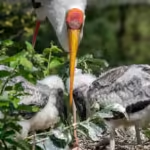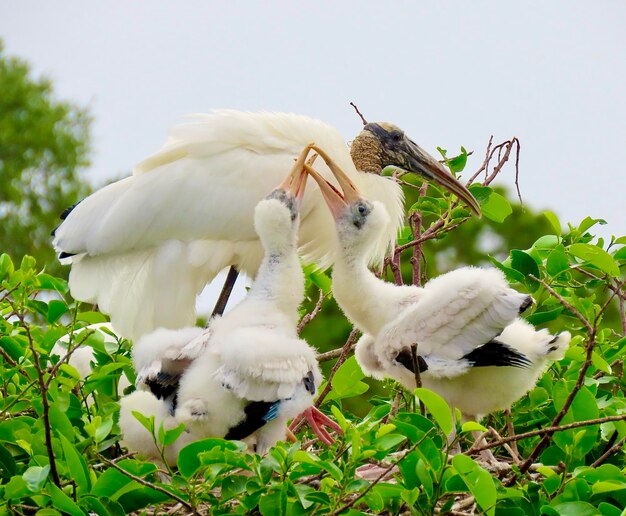Introduction: Exploring the Symbiotic Relationship Between Bees and Marabou Storks
The symbiotic courting between bees and marabou storks is an interesting instance of how one-of-a-kind species can coexist and support each other within the same ecosystem. Although their interactions won’t be at once, both species play key roles in maintaining the fitness and balance of the surroundings. The symbiotic courting among bees and marabou storks is mainly fascinating while we recall their precise yet interconnected roles within shared habitats. Understanding these roles offers a perception of how nature connects even the most unlikely creatures and reveals the importance of each species in an ecosystem.
1. The Role of Bees Inside the Ecosystem
Bees are notably critical for retaining biodiversity, and their primary position is that of pollinator. The symbiotic relationship between bees and marabou storks is deeply rooted in the manner bees assist preserve plant life and, in a roundabout way, the food internet that helps scavengers like marabou storks. As bees pollinate flora, they ensure that plant life can reproduce and provide food for herbivores, which in flip sustains predators and scavengers inside the meal chain, which includes marabou storks.
1.1 The Importance of Pollination by Bees
Bees are crucial for pollinating many sorts of flora, and this manner is important for the replica of flowering plant life. Without bees, flora can not produce the seeds and fruits that feed herbivores, which can be then fed on through carnivores and scavengers. The symbiotic dating among bees and marabou storks is a high-quality example of how bees’ movements within the environment help create food resources for different species. Through pollination, bees ensure the survival of plant species, and circuitously, they provide sustenance for marabou storks by assisting the herbivores they rely on.
1.2 Bees as Indicators of Ecosystem Health
Bees also are treasured signs of environmental fitness. Since they’re fantastically sensitive to modifications in their surroundings, including habitat loss, insecticides, or weather exchange, fluctuations in bee populations frequently signal broader environmental troubles. The symbiotic courting between bees and marabou storks is motivated by using this dynamic—if the bees are struggling, it can mean that the general fitness of the ecosystem is in danger. Marabou storks, like many other species, rely on a balanced and healthy environment to thrive, which is why the decline of bees may be a traumatic signal for all species in identical surroundings.
2. Marabou Storks as Scavengers and Ecosystem Cleaners
The marabou stork plays an essential role in keeping healthy surroundings, in general via its scavenging behavior. The symbiotic dating between bees and marabou storks turns obvious and we don’t forget how marabou storks help hold the environment in a manner that advantages all species, including bees. By feeding on dead animals and decaying organic dependents, marabou storks help to preserve their habitat clean and loose from an ailment, ensuring that the surroundings remain healthy and solid for other species.
2.1 Feeding Habits of Marabou Storks
Marabou storks are opportunistic scavengers, feeding on carrion, fish, and different decomposing organic cloth. While their food regimen may not without delay intersect with that of bees, the paintings they do are essential for maintaining a healthy habitat. The symbiotic relationship between bees and marabou storks is reflected within the marabou stork’s role as a purifier of the surroundings. By doing away with useless count numbers and reducing the capacity for sickness, marabou storks help hold the ecosystem liveable for all species, together with bees. This oblique effect guarantees that bees thrive in cleaner, safer habitats.
2.2 Contribution to Ecosystem Health
The scavenging behavior of marabou storks contributes notably to the overall fitness of their ecosystems. As they eat decaying matter, they help save you from the spread of harmful organisms and parasites. The symbiotic dating between bees and marabou storks performs a key role in ensuring a balanced, thriving environment for both species. By retaining atmosphere cleanliness, marabou storks lessen the threat of contamination, thereby helping the bees and different species that rely upon a wholesome, stable habitat.
3. How Bees and Marabou Storks Share Habitats
Bees and marabou storks proportion some of the identical habitats, which include wetlands, savannas, and areas near our bodies of water. These ecosystems provide resources for each species, and their coexistence in those environments highlights the symbiotic dating among bees and marabou storks. While their roles fluctuate notably, they both make contributions to the fitness and stability of the habitats they proportion.
3.1 Shared Habitats: Wetlands and Savannas
Wetlands and savannas are commonplace habitats for both bees and marabou storks. In those areas, bees pollinate quite a few flowers, helping the flora that paperwork the bottom of the meal web. Meanwhile, marabou storks scavenge decaying depend, supporting to keep the surroundings easy. The symbiotic courting between bees and marabou storks flourishes in these shared habitats, as both species guide one another’s survival circuitously. Healthy plants ensure that herbivores are well-fed, which in turn supports scavengers like marabou storks. This interconnectedness makes those habitats important for each species.
3.2 The Importance of Ecosystem Stability for Both Species
The stability of the surroundings is essential for both bees and marabou storks. As bees pollinate flowers, they contribute to the steadiness of the meal chain which incorporates herbivores and scavengers like marabou storks. By feeding on decaying matter, marabou storks assist keto ep a clean environment, which blessings bees by lowering the presence of harmful pathogens and making sure their habitats remain healthy. The symbiotic relationship between bees and marabou storks guarantees that these species, and others, can thrive in solid and balanced environments.
The Indirect Benefits of the Symbiotic Relationship Between Bees and Marabou Storks
While bees and marabou storks don’t interact immediately in an ordinary symbiotic way, their actions are interconnected in a way that advantages both species. The symbiotic courting among bees and marabou storks is an example of ways oblique contributions to the surroundings will have considerable effects on the survival and well-being of each species.
4.1 Bees Support the Food Chain for Marabou Storks
Bees play an important function in pollinating vegetation, ensuring that there’s sufficient plant life to assist herbivores. These herbivores, in flip, assist predators and scavengers like marabou storks. The symbiotic dating between bees and marabou storks is clear in the manner bees contribute to the food chain, making it feasible for marabou storks to locate sustenance in their shared habitat. By ensuring that herbivores have get right of entry to food, bees do not directly help the marabou storks’ potential to live to tell the tale.
4.2 Marabou Storks Support Bees by Maintaining Habitat Cleanliness
The paintings of marabou storks preserving their habitats easily have an essential gain for bees. By scavenging decaying natural resources, marabou storks assist preserve clean and safe surroundings. The symbiotic relationship between bees and marabou storks is contemplated in how the storks’ scavenging conduct facilitates lessening the threat of disorder, supplying a healthier environment for bees and different species to thrive.
Conclusion: The Complex Interdependence Between Bees and Marabou Storks
In the end, the symbiotic dating between bees and marabou storks, although diffused and oblique, exemplifies the interconnectedness of all dwelling matters in an environment. Both species play essential roles in keeping the health and stability in their shared environment. Bees contribute to pollination, helping the meal chain, at the same time as marabou storks preserve the habitat smoothly through scavenging. Together, those species assist create a balanced atmosphere, where the survival of one species often relies upon the movements of the opposite. Understanding this symbiotic courting between bees and marabou storks highlights the significance of keeping ecosystems for the advantage of all species that depend on them.










